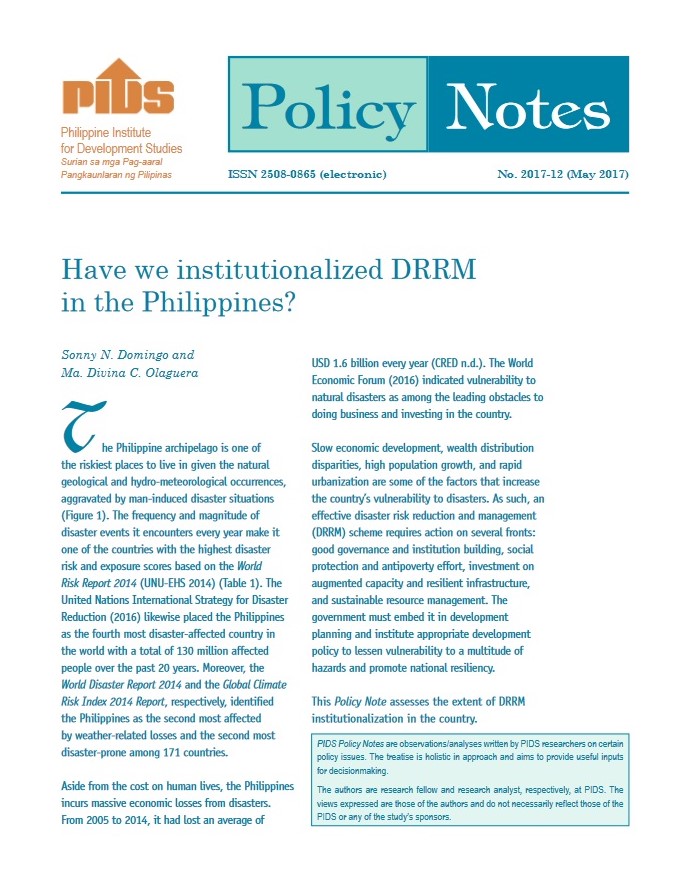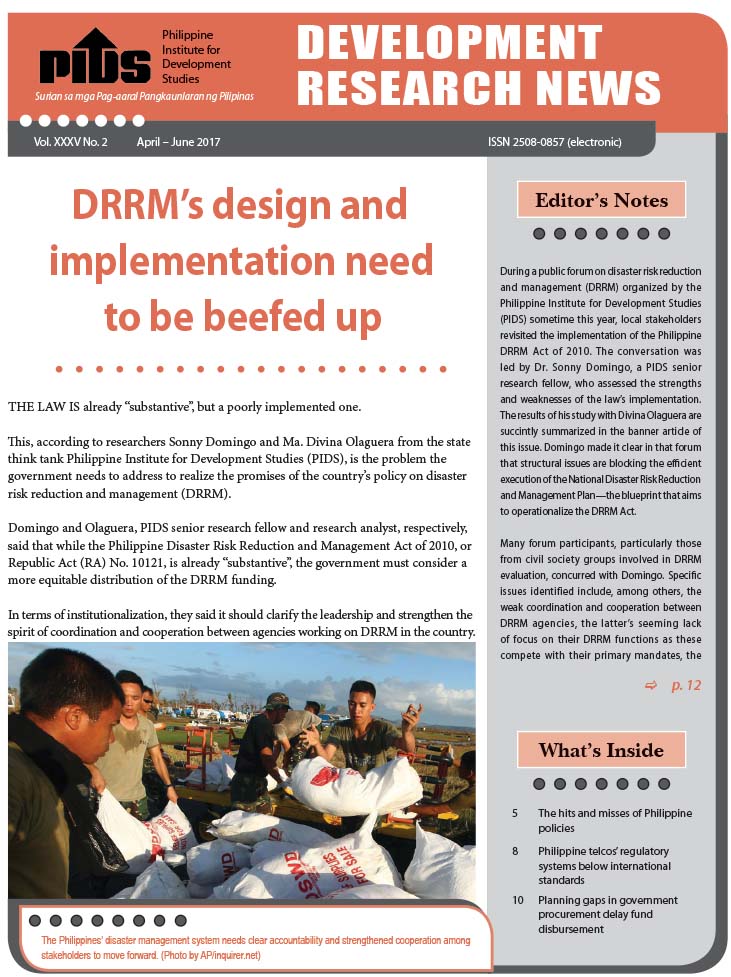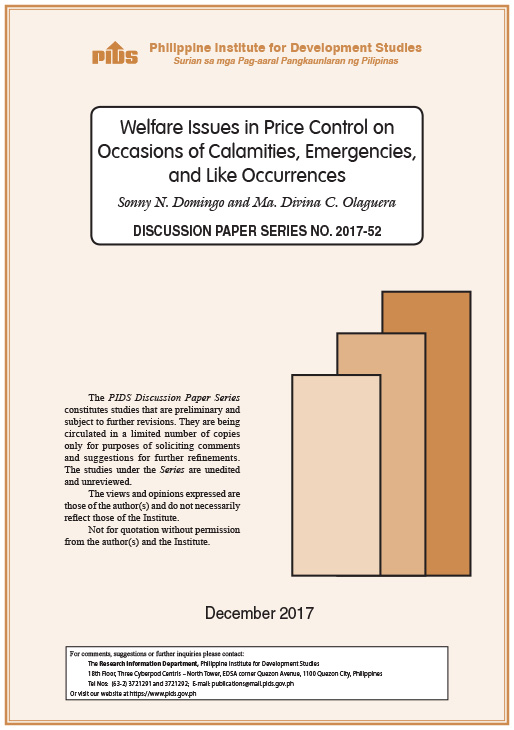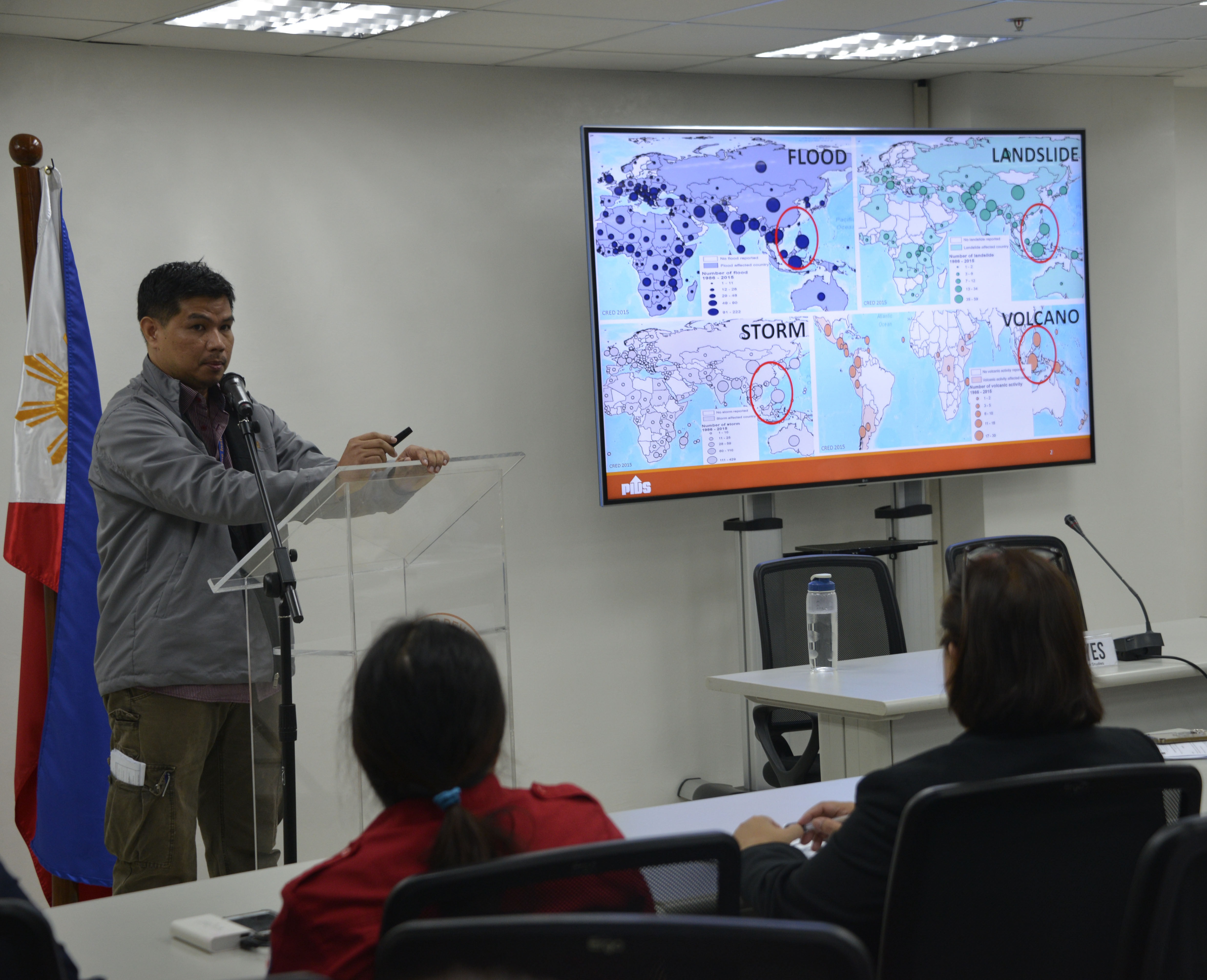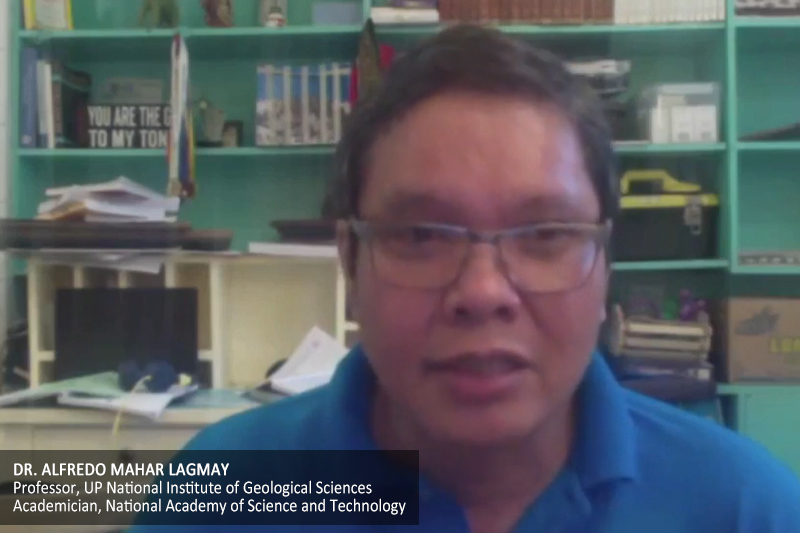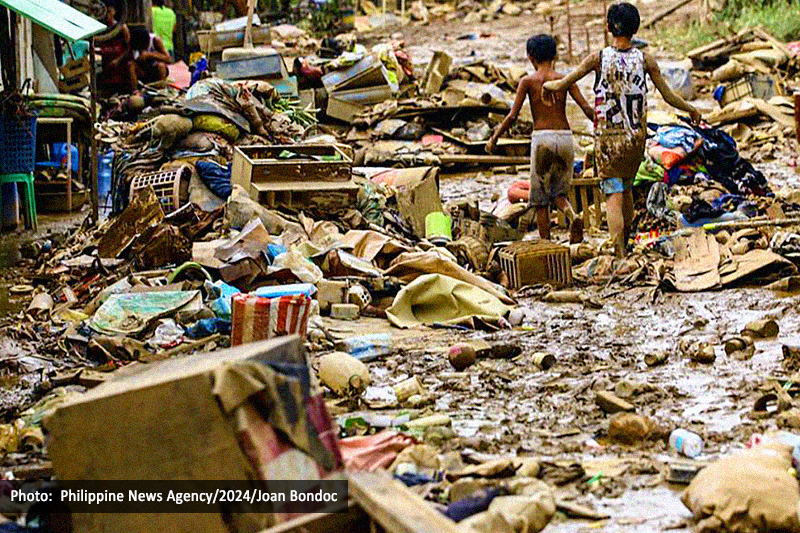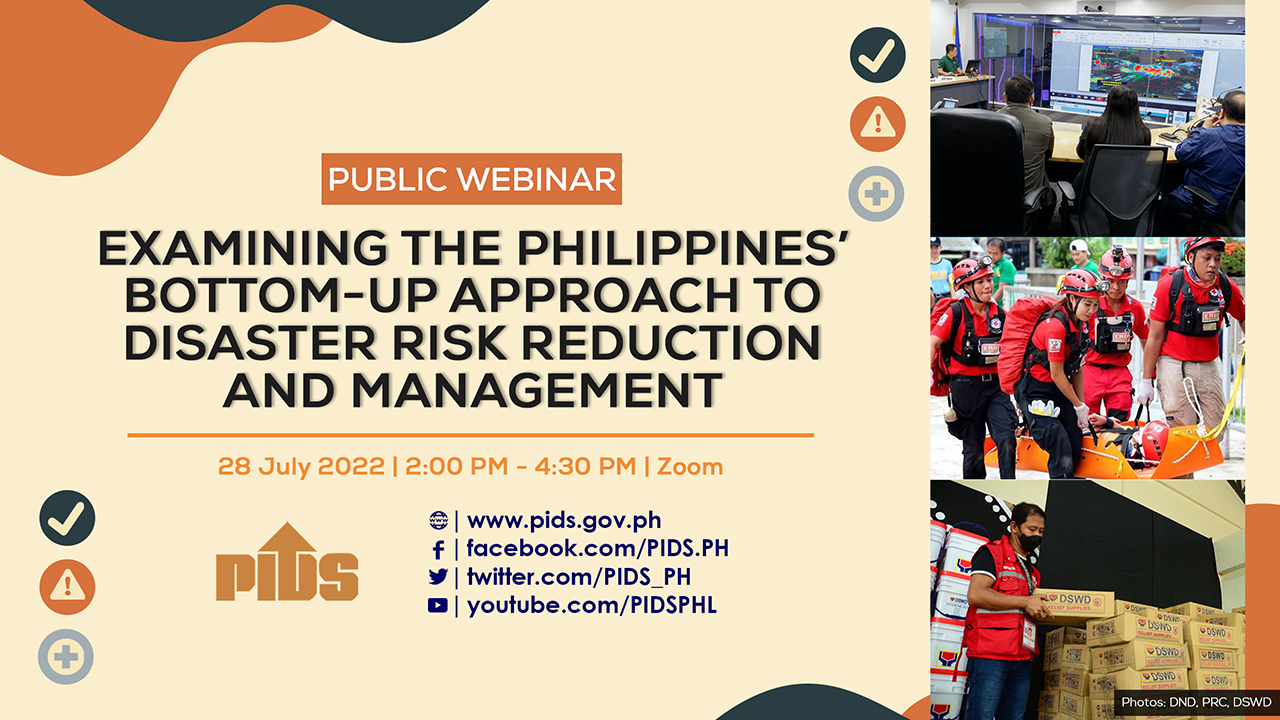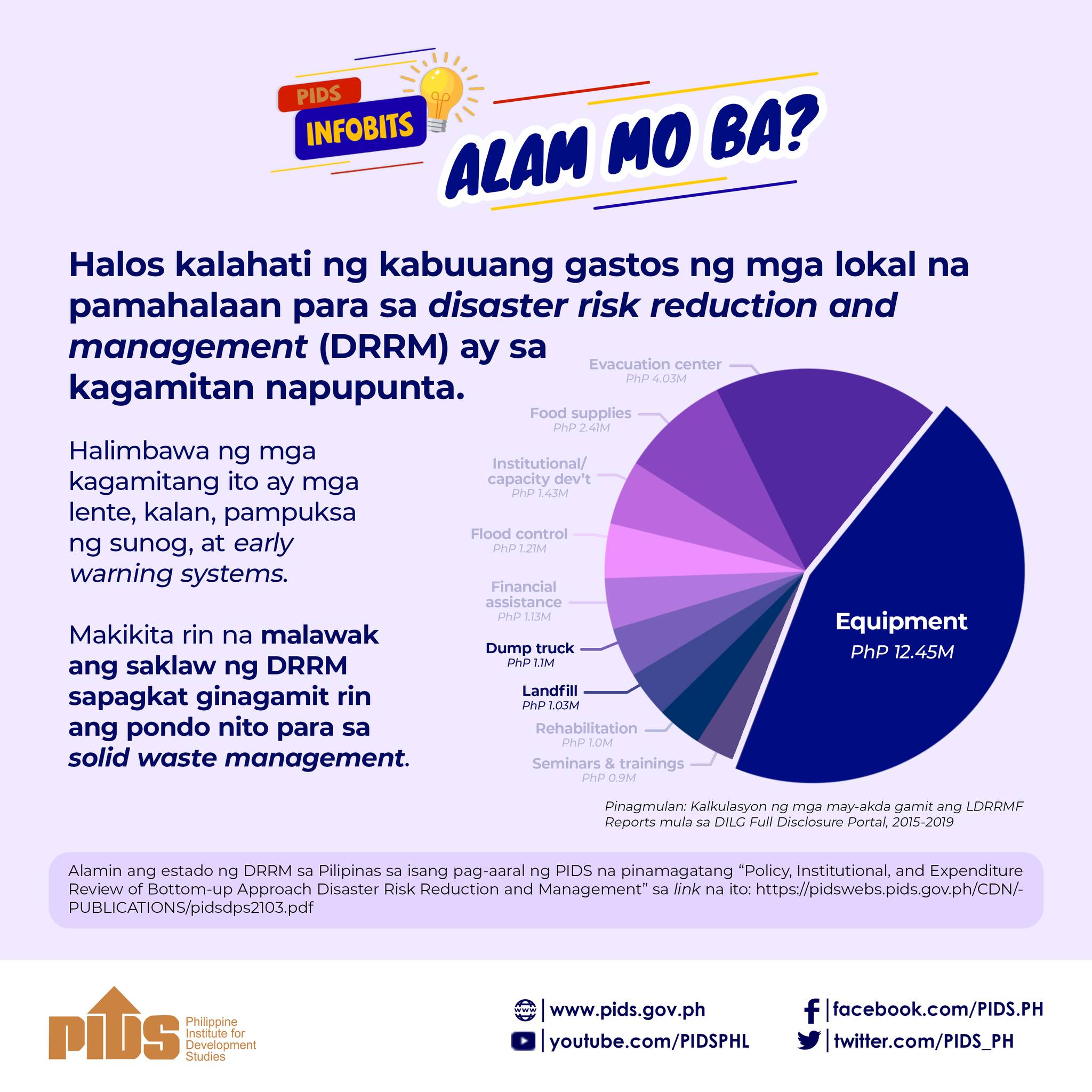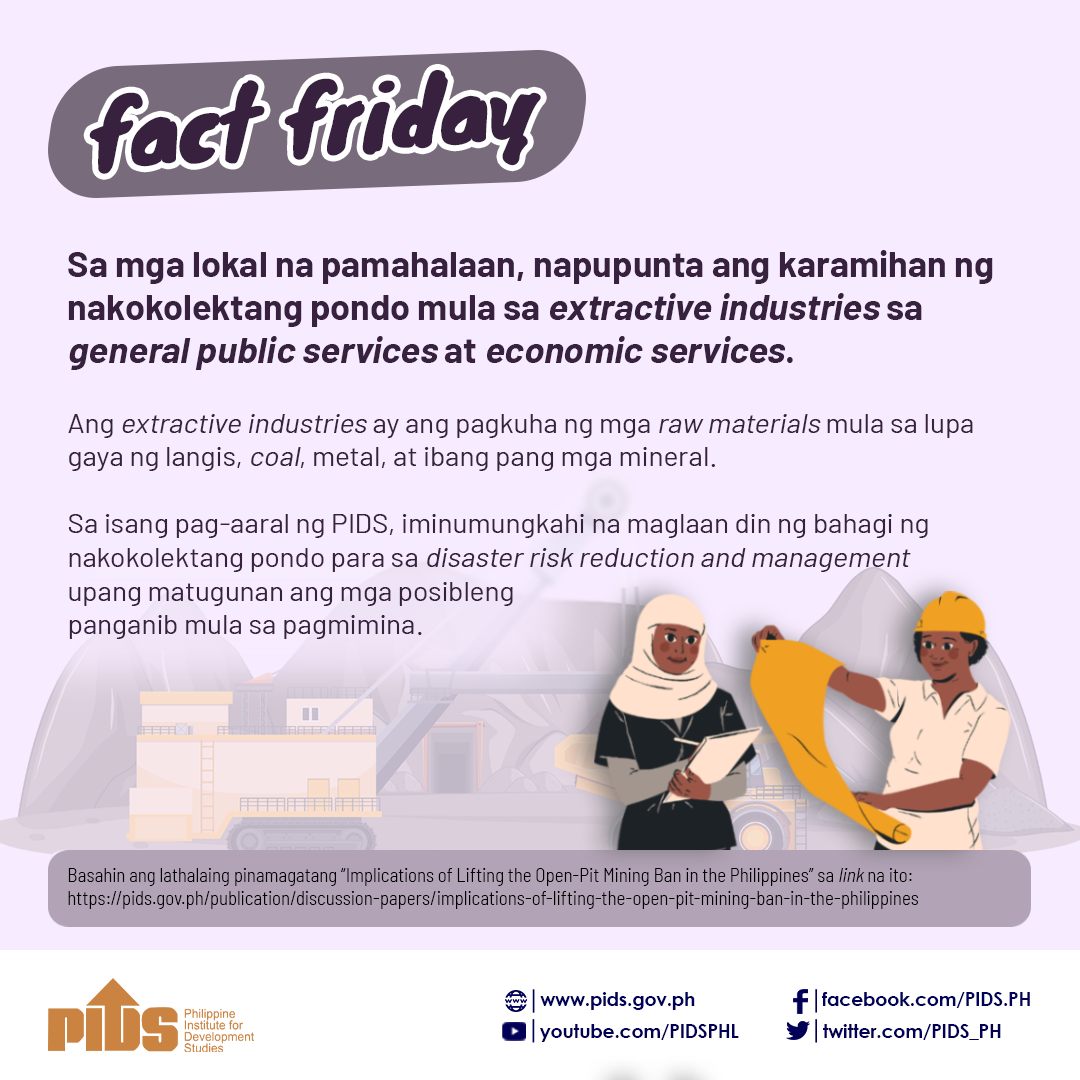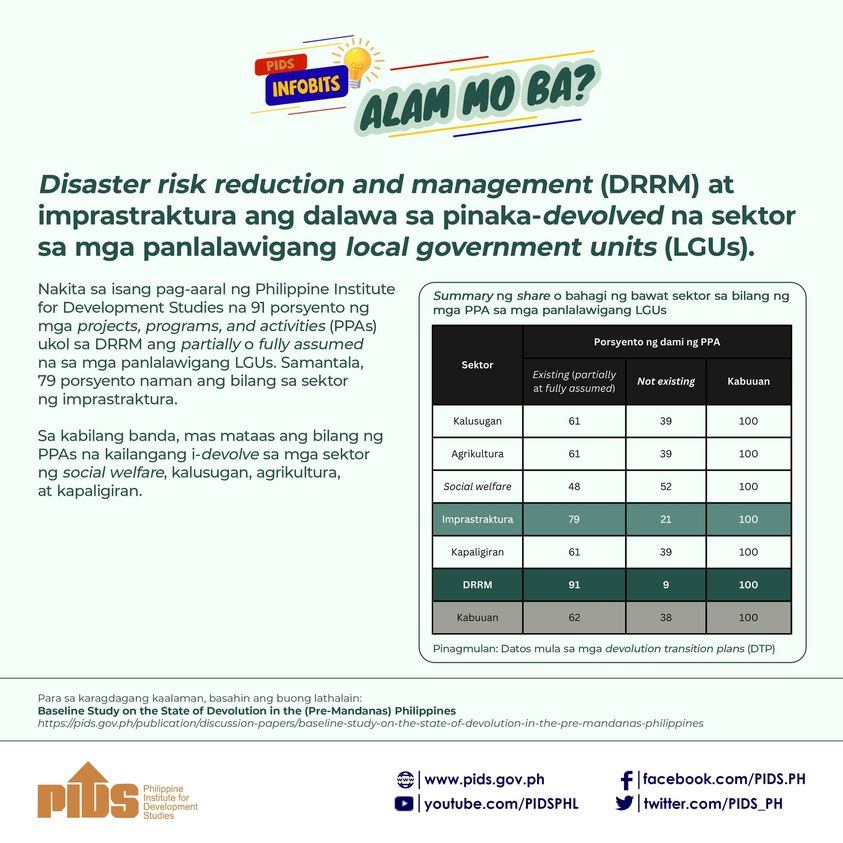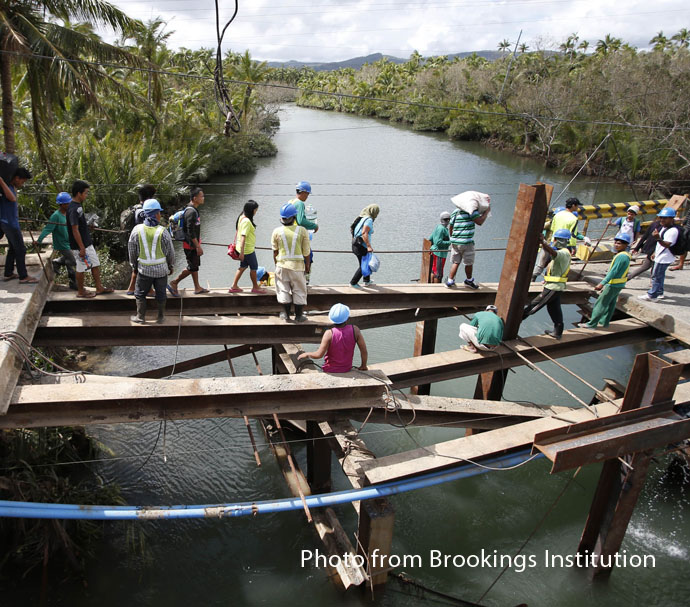
Preparing for a disaster is one thing, but recovering from a disaster is another.
While much has been done to boost disaster preparedness in the country, the country still lags behind in the aspect of postdisaster reconstruction, a study published by state think tank Philippine Institute for Development Studies (PIDS) revealed.
According to Deanna Villacin, Tatum Ramos, and Marife Ballesteros, PIDS consultant, former research assistant, and vice-president, respectively, the government’s current financing instruments are “inadequate to meet the needs to address medium to severe [disaster] events” in the country. However, they noted that these instruments may cover less-costly recurring disasters.
The authors attributed this inadequacy to the “higher frequency of occurrence of large-scale natural disasters and climate change” in the country in the last five years. For example, for recent disasters such as Typhoon Lawin (Haima), Typhoon Nina (Nock-ten), and the Surigao earthquake, the Office of Civil Defense has recorded postdisaster reconstruction needs of about PHP 32 billion. For 2013 Super Typhoon Yolanda, about PHP 214 billion was needed for postdisaster reconstruction, according to the National Economic and Development Authority.
The study also identified specific problems in implementing postdisaster reconstruction projects in the Philippines. (READ RELATED STUDY: A Review of Philippine Government Disaster Financing for Recovery and Reconstruction)
For roads and bridges, which are handled by the Department of Public Works and Highways, delays and backlogs are also blamed on inadequate funding. The bulk of the funding comes from the National Disaster Risk Reduction and Management Fund (NDRRMF), supplementary budgets, and additional appropriations. The authors also noted issues on budget processing and execution, such as protracted actions on requests averaging more than a year, according to interviews with the DPWH conducted in 2016. Problems such as unclear emergency procurement guidelines and lack of skilled personnel and materials available also brought challenges to the agency.
Meanwhile, the uncertainty on who can access funds created difficulties in reconstructing school buildings, the study also found out. For instance, only the DPWH can implement projects from the New Construction and Repairs Fund, despite the funds being under the regular budget of the DepEd. The agency also competes for access to its quick response fund (QRF) after the streamlining that has caused funds to be grouped with the QRFs of other “nonfirst responder agencies”, according to the study.
On postdisaster reconstruction issues surrounding the housing sector, the authors identified problems such as “poor quality of housing units and unsuitable sites of resettlement projects, lack of basic facilities at resettlement sites of National Housing Authorities and the Department of Social Welfare and Development, weak coordination among NHA, local government units, and end users during project planning and implementation, and the difficulty in finding suitable land for low-cost housing and titled lands for procurement purposes”.
The authors also noted the lack of monitoring system for donations from private sector and nongovernment organizations (both locally and internationally), creating confusion on which reconstruction projects have not been started yet or have already been completed.
To improve financing of postdisaster reconstruction in the country, the authors suggested enhancing “ex ante financing mechanisms especially in improving existing indemnity-based insurance programs”, considering the frequency of disasters nowadays.
To generate more funds, the authors suggested strengthening of private sector’s role in addressing problems in the housing sector, which receives the bulk of postdisaster reconstruction resources, as this will allow government to allocate the funds meant for housing to other critical projects.
Problems in procurement and budget release should also be addressed immediately, so that funds are easily activated during emergencies, according to the authors. They cited the recently approved revised guidelines on accessing the NDRRMF as a solution to this. ###
While much has been done to boost disaster preparedness in the country, the country still lags behind in the aspect of postdisaster reconstruction, a study published by state think tank Philippine Institute for Development Studies (PIDS) revealed.
According to Deanna Villacin, Tatum Ramos, and Marife Ballesteros, PIDS consultant, former research assistant, and vice-president, respectively, the government’s current financing instruments are “inadequate to meet the needs to address medium to severe [disaster] events” in the country. However, they noted that these instruments may cover less-costly recurring disasters.
The authors attributed this inadequacy to the “higher frequency of occurrence of large-scale natural disasters and climate change” in the country in the last five years. For example, for recent disasters such as Typhoon Lawin (Haima), Typhoon Nina (Nock-ten), and the Surigao earthquake, the Office of Civil Defense has recorded postdisaster reconstruction needs of about PHP 32 billion. For 2013 Super Typhoon Yolanda, about PHP 214 billion was needed for postdisaster reconstruction, according to the National Economic and Development Authority.
The study also identified specific problems in implementing postdisaster reconstruction projects in the Philippines. (READ RELATED STUDY: A Review of Philippine Government Disaster Financing for Recovery and Reconstruction)
For roads and bridges, which are handled by the Department of Public Works and Highways, delays and backlogs are also blamed on inadequate funding. The bulk of the funding comes from the National Disaster Risk Reduction and Management Fund (NDRRMF), supplementary budgets, and additional appropriations. The authors also noted issues on budget processing and execution, such as protracted actions on requests averaging more than a year, according to interviews with the DPWH conducted in 2016. Problems such as unclear emergency procurement guidelines and lack of skilled personnel and materials available also brought challenges to the agency.
Meanwhile, the uncertainty on who can access funds created difficulties in reconstructing school buildings, the study also found out. For instance, only the DPWH can implement projects from the New Construction and Repairs Fund, despite the funds being under the regular budget of the DepEd. The agency also competes for access to its quick response fund (QRF) after the streamlining that has caused funds to be grouped with the QRFs of other “nonfirst responder agencies”, according to the study.
On postdisaster reconstruction issues surrounding the housing sector, the authors identified problems such as “poor quality of housing units and unsuitable sites of resettlement projects, lack of basic facilities at resettlement sites of National Housing Authorities and the Department of Social Welfare and Development, weak coordination among NHA, local government units, and end users during project planning and implementation, and the difficulty in finding suitable land for low-cost housing and titled lands for procurement purposes”.
The authors also noted the lack of monitoring system for donations from private sector and nongovernment organizations (both locally and internationally), creating confusion on which reconstruction projects have not been started yet or have already been completed.
To improve financing of postdisaster reconstruction in the country, the authors suggested enhancing “ex ante financing mechanisms especially in improving existing indemnity-based insurance programs”, considering the frequency of disasters nowadays.
To generate more funds, the authors suggested strengthening of private sector’s role in addressing problems in the housing sector, which receives the bulk of postdisaster reconstruction resources, as this will allow government to allocate the funds meant for housing to other critical projects.
Problems in procurement and budget release should also be addressed immediately, so that funds are easily activated during emergencies, according to the authors. They cited the recently approved revised guidelines on accessing the NDRRMF as a solution to this. ###

